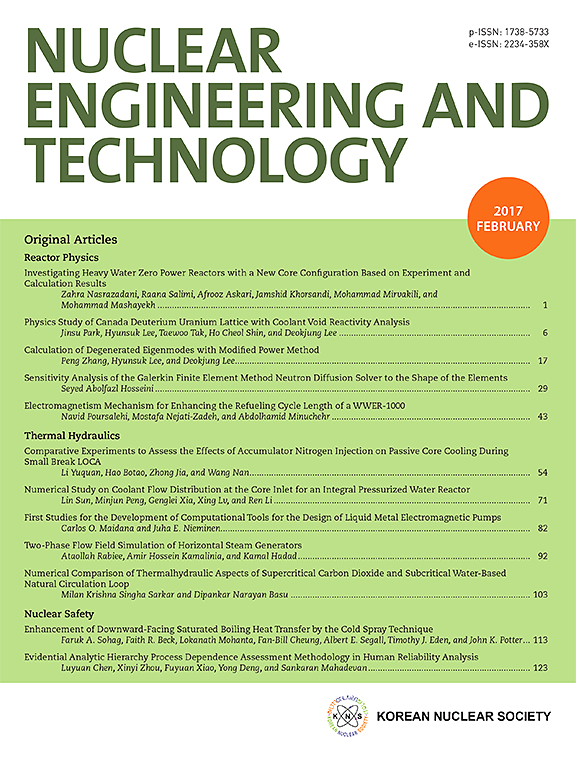Study on the operation scheme of a pool-type lead-bismuth fast reactor
IF 2.6
3区 工程技术
Q1 NUCLEAR SCIENCE & TECHNOLOGY
引用次数: 0
Abstract
The small lead-bismuth fast reactor has become one of the main reactor types in the Generation IV reactor because of its high inherent safety and easy miniaturization. However, the complex operation environments and variable working conditions make traditional control logic inadequate for load-following requirements. Additionally, the lack of operational experience with lead-bismuth fast reactors complicates control system design. To accelerate the development of small lead-bismuth fast reactors and ensure their safe and economical operation, this paper establishes and verifies a pool-type lead-bismuth fast reactor model and analyzes its dynamic characteristics under different operation modes by using time-domain analysis methods. Nine different small pool-type lead-bismuth fast reactor operation schemes were designed, and the operation schemes were analyzed based on the coupling characteristics of the lead-bismuth fast reactor. The best operation schemes are obtained under both turbine-leading and reactor-leading operation modes. This paper offers guidance for designing operation schemes of lead-bismuth fast reactors.
池型铅铋快堆运行方案研究
小型铅铋快堆因其固有安全性高、易于小型化等优点,已成为第四代反应堆的主要反应堆类型之一。然而,复杂的运行环境和多变的工况使得传统的控制逻辑无法满足负载跟踪的要求。此外,缺乏运行经验的铅铋快堆复杂的控制系统的设计。为加快小型铅铋快堆的发展,保证其安全经济运行,本文建立并验证了池型铅铋快堆模型,并采用时域分析方法分析了不同运行模式下的动态特性。设计了9种不同的小池型铅铋快堆运行方案,并根据铅铋快堆的耦合特性对运行方案进行了分析。在水轮机主导和反应堆主导两种运行模式下,均获得了最佳运行方案。本文对铅铋快堆运行方案设计具有指导意义。
本文章由计算机程序翻译,如有差异,请以英文原文为准。
求助全文
约1分钟内获得全文
求助全文
来源期刊

Nuclear Engineering and Technology
工程技术-核科学技术
CiteScore
4.80
自引率
7.40%
发文量
431
审稿时长
3.5 months
期刊介绍:
Nuclear Engineering and Technology (NET), an international journal of the Korean Nuclear Society (KNS), publishes peer-reviewed papers on original research, ideas and developments in all areas of the field of nuclear science and technology. NET bimonthly publishes original articles, reviews, and technical notes. The journal is listed in the Science Citation Index Expanded (SCIE) of Thomson Reuters.
NET covers all fields for peaceful utilization of nuclear energy and radiation as follows:
1) Reactor Physics
2) Thermal Hydraulics
3) Nuclear Safety
4) Nuclear I&C
5) Nuclear Physics, Fusion, and Laser Technology
6) Nuclear Fuel Cycle and Radioactive Waste Management
7) Nuclear Fuel and Reactor Materials
8) Radiation Application
9) Radiation Protection
10) Nuclear Structural Analysis and Plant Management & Maintenance
11) Nuclear Policy, Economics, and Human Resource Development
 求助内容:
求助内容: 应助结果提醒方式:
应助结果提醒方式:


